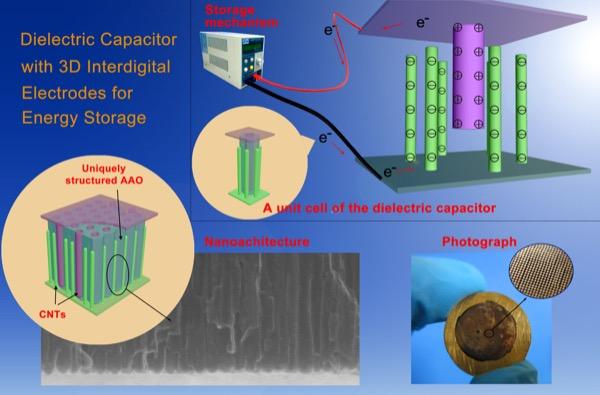A team of researchers from the University of Delaware and the Chinese Academy of Sciences has published a paper detailing their use of nanotechnology to create a capacitor that is both fast and offers greater storage capacity than models currently on the market.
“With our approach, we achieved an energy density of about two watts per kilogram, which is significantly higher than that of other dielectric capacitor structures reported in the literature,” says Bingqing Wei, professor of mechanical engineering at UD.
“To our knowledge, this is the first time that 3D nanoscale interdigital electrodes have been realized in practice,” Wei adds. “With their high surface area relative to their size, carbon nanotubes embedded in uniquely designed and structured 3D architectures have enabled us to address the low ability of dielectric capacitors to store energy.”
The success of the new capacitor can be pinpointed on the team’s use of a unique, interdigitated design. Similar to interwoven fingers between two hands within gloves, this novel approach dramatically decreases the distance between opposing electrodes which, in turn, increases the capacitor’s ability to store an electrical charge.

Also worth pointing is that the capacitor’s three-dimensional nanoscale electrode offers high voltage breakdown. As a result, the integrated dielectric material (alumina, AI2O3) doesn’t fail as easily in its intended function as an insulator.
“In contrast to previous versions, we expect our newly structured dielectric capacitors to be more suitable for field applications that require high energy density storage, such as accessory power supply and hybrid power systems,” Wei says.
Read the full report, “Dielectric Capacitors with Three-Dimensional Nanoscale Interdigital Electrodes for Energy Storage,” which was published in Science Advances, a first-of-its-kind open-access, online-only journal of AAAS.
http://advances.sciencemag.org/content/1/9/e1500605
Via the University of Delaware
Advertisement
Learn more about Electronic Products Magazine





